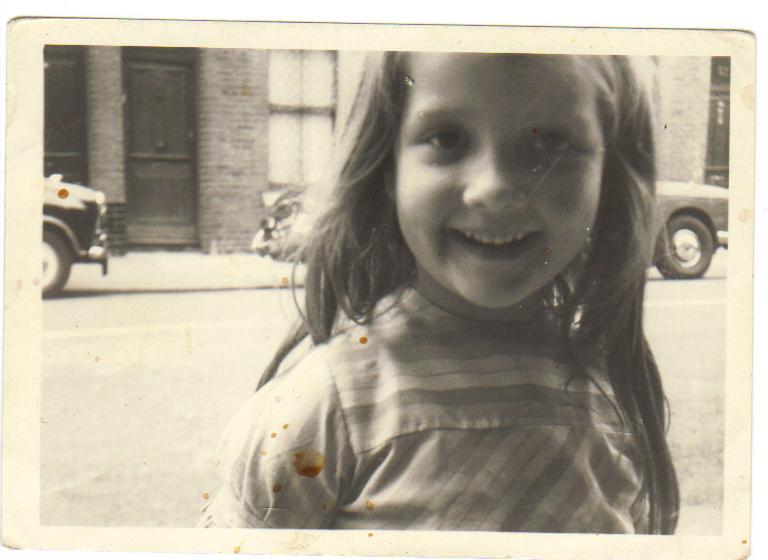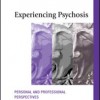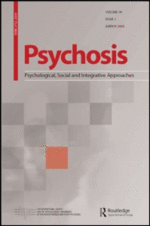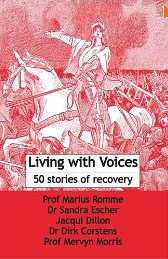The Tale of an Ordinary Little Girl
 Once upon a time there was a little girl, just an ordinary little girl, who like all children is born with basic human needs – the need to be fed and to be kept warm and safe. Like all children, she needs love and empathy to thrive and to grow and to fulfill her potential, like all children deserve to.
Once upon a time there was a little girl, just an ordinary little girl, who like all children is born with basic human needs – the need to be fed and to be kept warm and safe. Like all children, she needs love and empathy to thrive and to grow and to fulfill her potential, like all children deserve to.
But like each and every one of us born into this magnificent and mysterious universe, the arbitrary nature of who we are born to is a random act and like many children, far too many children in this world, she has the misfortune to be born to parents who are simply unable to provide the most basic necessities. For her parents are themselves hurt and broken children, thwarted and twisted, encased in all powerful adult bodies, masquerading as a mother and a father.
When the little girl first looks up into her mother’s eyes for a reflection of herself, to know that she is real and that she exists and that she is safe in this big, scary, world, she is met with a cold, hostile stare. For when mother looks down at this scrap of humanity, her baby girl, she does not see her beauty or her innocence but only her own helplessness, her own vulnerability, her own unmet needs and all of these things she despises and wants to smash, stamp out, annihilate. The baby wails in terror and reaches out her small hand to this woman, her mother, and the woman laughs and bites the baby’s hand, just as her own mother had done to her.
The mother throws the child across her shoulder and together they descend, deep into the underworld, to a place where unspeakable acts of horror will be committed. The underworld is inhabited with many demons, monsters and witches of the worst kind. The woman presents her possession, the child, to a man who can only be the devil. Together they laugh and they defile the child and rob her of her innocence.
The pain and the shock and the terror are too much for the child to bear for she is being betrayed and exploited by those who are meant to protect her and there is no escape, there is no saviour, there is no light at the end of the tunnel. All the while, the child repeats over and over to herself – I am not here; this is not happening to me; I am not in this body. When all at once the child experiences a tremendous pressure building inside her head as the urgent need to flee collides with the awful realisation of her own helplessness and then BANG! there is a huge explosion as her tiny mind shatters into a thousand, little pieces. She serenely floats off into the ether and calmly looks down from a great height at the stupid girl who is left screaming in the underworld. She pities the pathetic creature but she simply cannot be held responsible for those who refuse to help themselves.
The girl inhabits a dual world. In one, she is a normal child with normal parents, a gifted child who goes to school, plays with her friends, and likes wearing ribbons in her hair. In the other world, she is a dirty little bitch, evil and unlovable, treated with cruelty and contempt by anyone who can get their filthy hands on her.
Everything she gets she deserves. She is repeatedly threatened that if she ever tells anyone about what happens in the underworld, she will be put into prison because she has committed terrible crimes, or everyone will think she is mad and they will lock her in an asylum forever and throw away the key; no one will ever believe her. Or the devil, demons and witches will find her, they will always find her, they will hunt her down and they will kill her, her children, anyone or anything that she ever loves. However much she yearns for it, she has no place of safety, no saviour to rescue her, so she does what many children have to do. She survives the best way she can.
The survival strategies that she unconsciously develops as a child create an illusion of control, an illusion that she has some agency over what happens to her. Despite her abject helplessness, she utilises all the resources available to her at the time – her mind, her body, her spirit – and she fights for her life.
She begins to hear voices; voices that talk to her, talk about her, who comfort her, protect her and make her feel less alone. In time, they control and terrorise her but help her to stay alive. One of the first voices that she hears is that of ‘the great mother’. She is a very powerful maternal figure, who is beautiful and kind, a beneficent figure who is always there comforting and soothing her. The great mother is one of the girl’s greatest inventions for she is a clever little girl, yet she keeps this illusion secret from herself for the longest time. The great mother is central in supporting the girl to survive with her humanity intact and she also enables the girl to become a loving and compassionate mother to her own daughters, when the time comes.
Her body becomes the locus of her horror and her need for there is no other place to express it, there is no-one to tell. She begins cutting herself, banging her head against the wall, tearing at herself, all ways she discovers, of safely releasing her anguish. She draws no attention to herself. She hurts no one else. No one can touch her. Her relationship with food becomes a mysterious journey of adventure on which she discovers many special powers. By controlling what she eats, overeating, forcing herself to vomit and starving herself she is the creator of many marvellous tricks, sleights of hand that make her feel more in control in a world that is filled with terrible, inescapable, arbitrary cruelty. For once, she has control of her body. She can do what she likes to it. She is mistress of her own universe.
Her creativity extends beyond her body into the world. She loves writing stories and poems, drawing and painting, reading as many books as she can get her little hands on. Books allow her access into other worlds, worlds where there are endless possibilities. In the realms of her imagination the characters and stories in books captivate and entrance her, become meaningful to her to the extent that she internalises them inside of her so that she feels less alone and the world still holds some magic and wonder for her. Her sense of justice is always there burning brightly inside of her, the whole time. She dreams of a world where one day she will be safe and free and loved.
She finally escapes the underworld after many torturous years when she reaches womanhood. They may have broken her mind and her body but thankfully, her spirit is still intact. She is inhabited by a multitude of characters each who have their part to play in helping her to survive. She does not realise this yet. For now, she hears their voices and sometimes catches a glimpse of them in the mirror, but she does her best to conceal their existence to herself and everyone else. She is adept at inhabiting different worlds and used to keeping secrets locked inside of her. The voices of the devils, witches and demons along with those of the children still trapped in the underworld, echo in her mind long after the worst has already happened, reminding her of what they will do if she ever speaks about what has happened, so she remains silent.
One day, years later a miracle occurs and it is now the girl who sits and looks down into the eyes of her own, baby daughter. This child has been much longed for and is much wanted and she is awestruck by the beauty and perfection of this tiny being. For the first time in her life, the girl’s body has done something that she can feel proud of. She smiles at the baby and beams love into her eyes and the child knows that she is real and that she is loved and that she is safe in this big, scary world.
Without warning, this idyllic scene is invaded by demons from the past. The girl’s voices multiply and intensify saying things that disturb and frighten her. She begins seeing horrifying images of abuse, torture and death. She can feel it in her body. Marks and bruises appear on her skin like stigmata. She begins to cut herself frequently in an attempt to appease the devil but to no effect. He is never satisfied. She becomes convinced that someone will try and hurt her and her baby because she knows how dangerous the world can be for little children. She becomes intensely fearful; terrified to leave the house in case someone tries to abduct them and take them to the underworld to kill them. She fears that she is going mad like she always knew she would, like they always said she would. She inhabits a dual world. She is a devoted mother, with a close and intimate bond with her baby, breastfeeding her on demand, yet she knows she is contaminating her with all of the poison that swirls around inside of her. She feels deeply ashamed of herself for being such a freak of nature and starts to feel as if there is no escape from the horrors of the past. She sees no way out but to end her life but she cannot bear the thought of leaving behind a motherless child.
In desperation, she seeks asylum in a place that is meant to provide sanctuary for her. She hopes to find safety and support for her and her precious child and believes that asking for help is a responsible and wise act. Perhaps when she tells them about what happened to her in the underworld they might even congratulate her on her efforts thus far. Surely they will see what a tremendous achievement it has been to get this far on her own.
The witches, devils and demons try to silence her with their vicious threats yet she begins to tell the gatekeepers at the asylum, who assure her that they are learned men, healers in fact, about the children who have suffered in the underworld. To her astonishment, they reiterate the words of the devil. There is no underworld. She is crazy. She is ill. She was born with something wrong with her. She feels as if she has been slapped in the face, kicked while she is down, re-abused. This is insult to injury. She is wild with outrage and has to restrain herself so as not to rip them all to shreds. This reality is enough to drive anyone crazy. The place that is meant to provide her with sanctuary is the place that nearly drives her over the edge once and for all.
She has escaped hell once already – she is a warrior after all – and uses whatever means necessary to deceive and trick her way past the gatekeepers. Once she is liberated, she runs as fast as she can and finds her way back to her child. She clutches her baby to her chest and gasps for breath. There is no sanctuary yet she cannot give up hope. She has come this far. She is a woman on a mission. One day, she will show them all.
After much searching, she finally encounters truly wise people, brave souls who have the courage and integrity to witness her truth. As much as it pains them, they listen to her stories from the underworld, and hear of the terrible suffering that many children have endured. Together they walk down a long winding, road, back to the underworld, where a process of truth and reconciliation, of listening, bearing witness and of facing the horrors of the past can take place. The world will never look the same again to them for they have seen the underworld. And even though she is a freak of nature they love her and they hold her and they soothe her and gradually she begins to feel human. She begins to feel real.
She discovers that she isn’t alone in quite the same way that she always had been. She begins to accept support as an act of courage and commitment to life and the future. Only then can she begin to truly mourn for all she has lost. She did not know it was possible to cry so many tears. They continue to hold her.
The most profound realisation dawns on her gradually, becoming apparent incrementally over time and then one day she suddenly knows what she has always known. Her voices are more than just voices. They are many different selves, with different names, ages, experiences, feelings, identities; dissociated selves that became internal representations of her external world. Rather than trying to eradicate these different parts of her even though they sometimes frighten her, she begins to embrace them. Each is part of the whole of her. She begins to listen to them and understand them and to greet them with compassion and understanding. To her delight, they begin to teach her the mysteries of healing, alchemy and magic. Gradually she feels less ashamed of who she is and begins to marvel at how creative she has been in surviving the horrors of the underworld. At times it feels as if she has created a work of art.
On the other hand, she finds it hard to comprehend a world that often makes no sense to her, a corrupt and crazy world which frequently exploits the vulnerable and protects the powerful. With all that she knows and all that she has seen and all that she has learnt, she cannot just standby and let that happen. If she is to be a part of the world then she must do what she can to make it a place she can actually inhabit and remain sane.
She begins to meet with others, warrior children, maddened men and women, fellow travellers who have escaped the underworld or some other kind of hell, as well as rebels and renegades, truth-tellers, pioneers and freedom fighters, all walking along the same path as her, seeking the same kind of justice. They too feel a collective responsibility to expose the truth and not allow further injustices to be perpetrated. They understand that being a bystander and remaining silent is the same as being complicit. They know that freedom is never given freely by those who have power; it has to be fought for. They understand that only the truth will set us free.
After a long, arduous journey that has taken her many, many years to accomplish, the girl finally feels as if she has come home. She is safe now, she is free, she is loved. She wears her battle scars with pride. She may still hear the echoes from the past but she considers herself one of the lucky ones. In many ways she is blessed. Her life and all that she did to get here, is a triumph.
This paper is based on presentations at numerous international conferences/seminars, including Royal College of Psychiatrists (UK) Training Day on Trauma and Violence, London UK, November 2008; Recovery Conference, Aarhus, Denmark, May 2009; World Hearing Voices Congress, Maastricht, Netherlands, September 2009.




 A new analysis of the hearing voices experience outside the illness model resulted in accepting and making sense of voices. This study of 50 stories forms the evidence for this successful new approach to working with voice hearers.
A new analysis of the hearing voices experience outside the illness model resulted in accepting and making sense of voices. This study of 50 stories forms the evidence for this successful new approach to working with voice hearers.